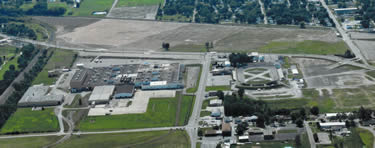The History of Guide Lamp
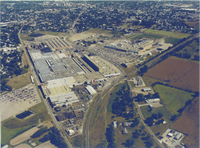
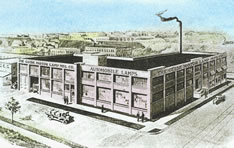
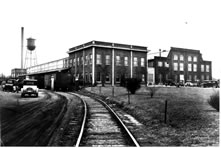
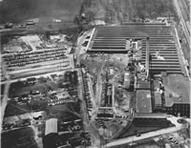
Guide at its glory
Guide's Madison Ave. plant in Cleveland
Guide's
1928 Anderson plant.
1937 Aerial View of Guide.
Welcome...
to my Guide Lamp web site. Like most people who have worked at Guide Lamp I have always had an interest in
the history of our company and General Motors. I also have an interest in web design and decided
to combine the two.
Like most people who have worked at Guide Lamp I have always had an interest in
the history of our company and General Motors. I also have an interest in web design and decided
to combine the two.I was born in Muncie, Indiana in 1944 and later grew up on a farm near Middletown. In the 1960’s after graduating from high school it was just a given that you would try to go to work for one of the automotive plants in Madison, Henry, or Delaware County (if you didn’t go to college). All three of these counties have a rich history in the startup and development of the automotive industry. I started work at Guide Lamp in 1964 in the Turning Signal Department. It was during the Vietnam War and I (along with most men my age) was drafted 8 months later and spent next 3½ years in the Air Force. After being honorably discharged from the Air Force I returned to work at Guide Lamp in December 1968. In 1971 I was accepted into the Electrical Apprentice Program and began work as an electrician. Starting in 1980 I worked in the Automation Department for Chain Sandu as an Associate Engineer. In 1984 I returned to work as an electrician. In 1999 with the pending sale of Guide Lamp announced, I decided to retire. I had 2 children getting ready to attend Purdue, so one week after retiring from Guide Lamp I started work at the Chrysler Mack Avenue Engine Plant in Detroit. After 5½ years in Detroit I returned to my home near New Castle, Indiana and started working at the New Castle Metaldyne Chassis Plant (formally Chrysler), as an electrician. After 3 years, Metaldyne began shutting down and I was laid off. Six months later I went to work at the new Greensburg, Indiana Honda Assembly Plant. After 8 months of working in a white work uniform, I realize it was time to retire (the 52 mile one way trip didn’t make it much fun anyway). |












